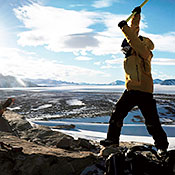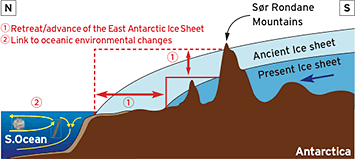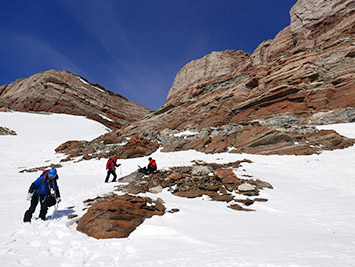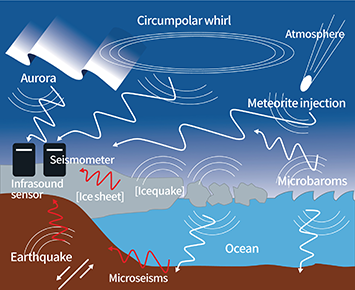National Institute of Polar Research
Geoscience Group
Study of the evolution of the Earth for 4.6 billion years
Leader Tomokazu HOKADA
From advanced study of geology, geomorphology and solid earth geophysics

The Antarctic Continent, which is mostly covered by the Antarctic ice sheet, is comprised of a substratum that formed over a period of 4 billion years and which holds records of the retreat and advance of the ice sheet. The face of this rock is exposed on the outer edges of the ice sheet. The exposed rock and surrounding sea areas contain glacial geomorphology and deposits. The land mass and ice sheet interact with each other, allowing the observation of unique solid earth geophysics phenomena. Traces of the Gondwana supercontinent breakup can be found on the seafloor of the Antarctic Ocean and the Indian Ocean that surround the Antarctic continent. Moreover, meteorites containing clues to the creation of our solar system can be found in the Antarctic ice sheet. These events and phenomena are studied with geology, mineralogy, geomorphology, quaternary research, geodesy and solid earth geophysics to reveal the history of the universe, changes in the historical evolution of the Earth’s crust, and changes in the quaternary environment accompanying the retreat and advancement of the ice sheet, as well as changes in the Earth’s crust and sea surface today.

Geomorphological and geological surveys of the Sør Rondane Mountains. Our objectives are to reconstruct a detailed history of the retreat/advancement of the East Antarctic Ice Sheet based on geomorphological and geological surveys, and to understand its response to the Southern Ocean and changes in the global climate.

Geological survey at Botnnuten, East Antarctica

Various seismic, infrasonic and hydro-acoustic waves from various surface environmental sources have been detected, indicating time-space variations in polar region.









